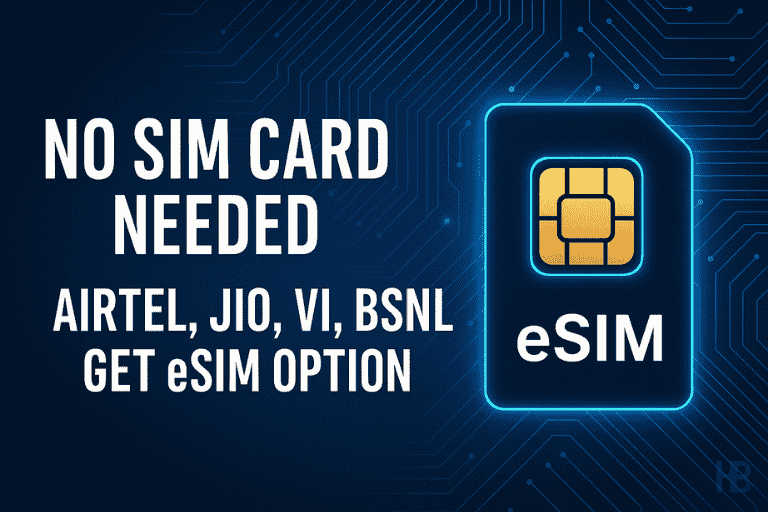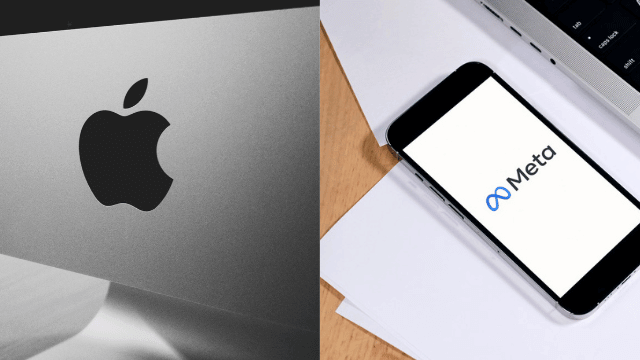The telecom industry in India is quickly transitioning to digital connectivity, and the most recent big news is the introduction of eSIM features by the prominent mobile providers.
The support of eSIM options by Airtel, Jio, Vi, and BSNL currently implies that users no longer have to use physical cards in order to stay connected.
This is a huge technological advancement because eSIM in India 2025 is becoming a new standard regarding smartphones, tablets, and smart devices.
Let us learn about what eSIM is, its potential advantages to its users, and the easy process of enabling it to work with various mobile operators.
What is eSIM, and why is it important?
An eSIM (Embedded SIM) actually is a digital imitation of an ordinary SIM card. Rather than popping in a physical card, you have the SIM information permanently programmed into your machine.
This enables the users to switch networks, add new plans, and manage numerous numbers without card replacement.
Airtel, Jio, Vi, and BSNL have modulated the move to introduce the eSIM support as part of India’s nationwide push to adopt digital SIM technology.
It simplifies, speeds up, and improves the security of mobile access for many millions of subscribers.
Airtel eSIM Option
Airtel in India was among the early telecom companies that were implementing the Airtel eSIM option. With Airtel eSIM, users can:
Sign up directly via email/SMS request.
Use only one device to handle a variety of numbers.
Available on smartphones, smartwatches, and tablets, all of which support eSIM.
It is a fast process that needs a registered email ID and a device that is compatible with an eSIM.
Jio eSIM Option
Reliance Jio also offers its subscribers a convenient Jio eSIM. To get their eSIM activated, users can approach a Jio Store, a Reliance Digital store, or a Jio partner retail store.
After processing the request, users are given a QR code to scan with their smartphone, and they are quickly added to the setup. Apple, Samsung, and Google Pixel are all compatible with Jio’s eSIM.
Vi eSIM Support
Vodafone Idea (Vi) has not been left out either, as the company is providing Vi eSIM service. With the help of an SMS and an email verification, customers are able to request an eSIM upgrade.
Once this is confirmed, the QR code is sent, which is scannable to use the eSIM on the specific devices.
Vi eSIM offers improved security, convenient portability, and flexibility to the premium users.
BSNL eSIM Launch
The BSNL eSIM launch of public sector telecom operator BSNL has also seen the entry into the market.
BSNL eSIM is presently being launched in phases but will soon be seen in the whole of India, especially by high-end and urban customers.
This move reflects the adoption of India-first innovation of digital SIM by even the state-run operators.
Where and how to activate eSIM in India: Instructions.
The process is slightly different depending on the operator, but the below is a rough guide of how to enable eSIM in India:
- Making sure that your phone has eSIM (Apple, Samsung, Pixel, and a few Motorola phones).
- Send your operator the eSIM activation number to receive the eSIM activation message.
- Authenticate and confirm the request by the email ID.
- Get a QR code with the operator.
- Listens to a QR code scan on the settings of your phone under cellular or mobile data.
- Activation of your eSIM will automatically take place.
The future of connectivity is eSIM
The use of Airtel, Jio, Vi, and BSNL digital SIMs evidences that India tends to enter the world of smarter and more secure communication. Some key benefits include
No card or cell phone needed – less paperwork and less chance of a broken SIM chip.
Two or more profiles – have work and personal numbers on one phone.
Global connectivity – convenient when one travels regularly.
Green/environmentally friendly – reduces plastic waste in comparison with the traditional SIMs.
The introduction of eSIM in India in 2025 by Airtel eSIM option, Jio eSIM option, and Vi eSIM support, and the launch of BSNL eSIM, is one of the greatest leaps for the telecoms industry.
This is not only upgrading mobile use to ease but also transitioning India to a purely digital future.
Coupled with the elimination of the physical SIM cards, telecom operators are providing users with faster access, increased flexibility, and a secure mobile experience.


